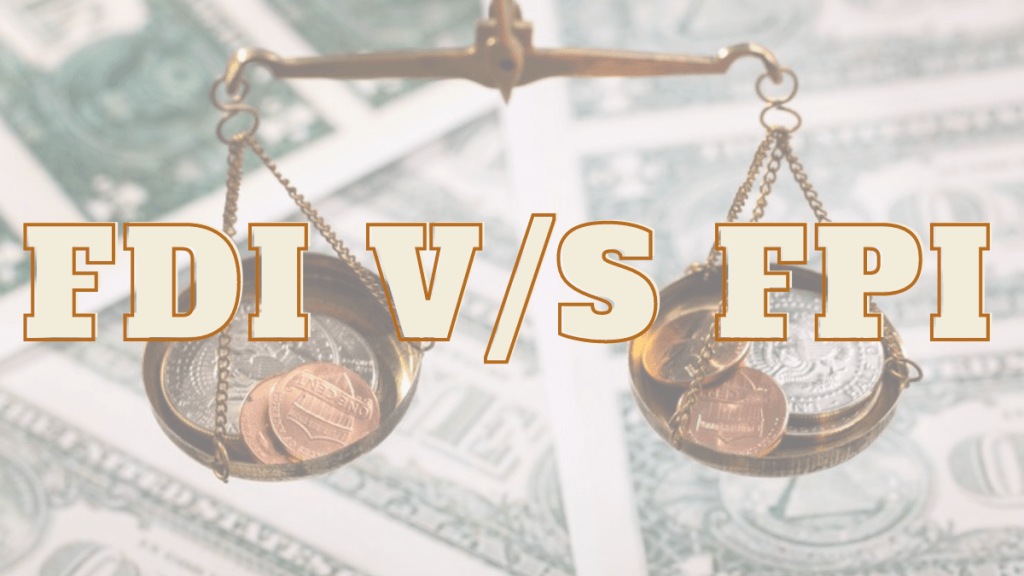Among the various available investment options for a business expanding its horizons abroad, Foreign Direct Investment (FDI) and Foreign Portfolio Investment (FPI) are the two most preferred options. While these terms may sound similar to a layman but both, FDI and FPI, have distinct approaches to international investment along with their own implications and significance.
What is FDI?
When a foreign entity invests in a foreign country with the intention of establishing a long-term commercial presence, it is known as foreign direct investment, or FDI. It involves purchasing at least 10 per cent of a foreign company’s shares to obtain a controlling position and provide the investor management power.
There are three ways of making an FDI. It involves creating a joint venture, through merger and acquisition, and by establishing a subsidiary company. It is to be noted that FDI is subject to various regulations, policies and risks, which needs to be managed carefully, in order to ensure positive benefits of FDIs.
What is FPI?
When a foreign portfolio investors make international investments in stocks, bonds, and other financial assets, it is known as foreign portfolio investment, or FPI. It does not include taking over the company, in contrast to FDI. It’s a short-term trading method influenced by market trends that involves buying and selling securities and is influenced by market patterns.
FPI comes in several forms, which include debt investments, equity investments, and other options such as exchange-traded funds, mutual funds, and real estate investment trusts.
Through FPI, investors can access potentially greater profits given by foreign markets and diversify their portfolios. Additionally, it enables nations to improve liquidity, expand their financial markets, and draw in capital inflows. Notedly, NRIs don’t come under FPI.
How is FDI different from FPI?
While FDI is a direct investment, FPI is an indirect investment as an individual is required to invest in foreign financial assets such as stocks, bonds, unlike FDI, wherein the investment is done in foreign businesses along with an interest and control over the operations and management.
Another differentiating factor between FDI and FPI is that FDI is a long-term investment which enables you to establish or expand your business operations in a foreign country. However, FPI is a short-term investment which enables you to capitalise on market opportunities. Entry and exit is relatively easier in FPI than in FDI.
Interestingly, FDI comes with a power to potentially contribute to the economy of that foreign ground through employment, technological development and economic growth. Contrary to this, FPI can only impact financial markets and liquidity with a limited direct impact on the economy.
FDI v/s FPI – which one is better?
Well, it totally depends on an individual and his needs to choose from these two investment options. However, control and ownership, investment horizon, risk and volatility, sector and focus are among the factors to be considered while choosing FDI over FPI, or vice-versa.
Governmental interference
In order to attract foreign direct investment (FDI) in the manufacturing sector, the Government of India has launched the Made in India campaign and loosened regulations for FDI in the defence and oil refinery sectors, among other measures. Meanwhile, FPI in India has experienced significant fluctuations. FPI inflows into India hit a record $36.5 billion in 2021.
Furthermore, the United Nations Conference on Trade and Development (UNCTAD) released its World Investment Report 2022, which placed India seventh out of the top 20 host economies for foreign direct investment in 2021.
From $60.22 billion in 2020 to a record $84.84 billion in FDI in 2021, India saw growth. A number of variables, including India’s expanding GDP, skilled workforce, strategic position, and friendly investment climate, were cited in the report as reasons for the country’s outstanding FDI performance.

